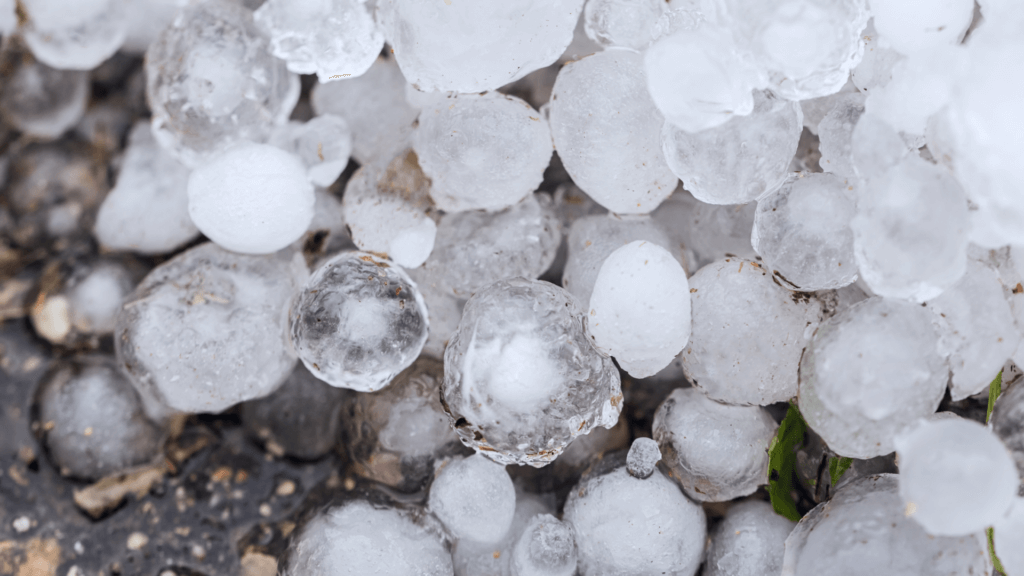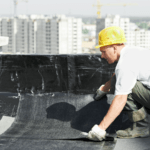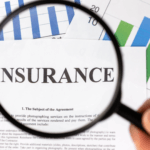
Hail damage can place a lot of undue stress on business owners – especially if the roof is compromised. Although there are ways to mitigate roof damage before a hailstorm, destruction may still occur and the property owner will need to file a commercial property insurance claim. With this in mind, it’s important to note that certain insurance claims, including those for hail damage, have time limits imposed on them for when they can be filed. Understanding these constraints and the laws surrounding them can help ensure these commercial insurance claims are processed promptly and effectively, so operations can continue.
Hail Damage in Texas
Dealing with hail damage to a roof is an unfortunate reality for many commercial property and business owners in Texas. This is due to the state being in a region that experiences a high frequency of hailstorms due to the collision of warm, moist air from the Gulf of Mexico with cooler air masses from the north. This combination creates the ideal conditions for hail to form, leaving many communities across Texas vulnerable to hail damage.
2023, in particular, was especially significant concerning the frequency and cost of hail-related claims, with Texas leading the number of buildings damaged in the U.S. For instance, one storm that impacted Travis County and Williamson County resulted in up to a whopping $600 million in damage. Another hail event in the Dallas-Fort Worth area caused an estimated $7 billion to $10 billion in insured damages. Overall, Texas ranks as the top state in the nation in terms of the number and scale of hail-related weather events.
The impact of hail can cause devastating damage to roofs in particular. For instance, a roof that has sustained prior hail damage will likely see punctures through the roof and roof membrane during future hailstorms. In addition, having roof punctures present can cause further damage to the interior of a commercial structure, as water can more easily enter the building. Hail damage to a roof can be incredibly costly too, as in some circumstances the damaged roof will need to be replaced entirely.
Texas Hailstorm Deadlines
Texas has certain deadlines and statutes of limitation that must be taken into account when filing a claim for hail damage. This is because policyholders who do not timely file a hail-related claim within the applicable limits could be subject to legal penalties. Although the timeframe for filing a hail damage claim ultimately depends on the stipulations listed within a commercial insurance policy, the Texas statute of limitations for filing a hailstorm claim is usually two years from the date of the covered event. Despite this, it is of paramount importance that policyholders file their claim for hail damage as soon as the damage has been assessed. The quicker a claim is filed (while still being appropriately thorough, of course), the more likely it is to be approved by the insurance provider.
Steps to Follow When Filing A Commercial Roof Hail Damage Claim
It’s key for commercial property owners to be proactive and report hail damage to their insurance providers promptly and within the required timeframe. Failing to do so can result in a complete claim denial, leaving businesses responsible for covering the costly repairs out of pocket. Understanding the steps required to report and document hail damage from the outset can ensure a smoother insurance claim process. These include:
- Review Commercial Wind and Hail Policies
Commercial property owners must have a thorough understanding of their policy or policies and what is or is not covered before a devastating hail event occurs. In some cases, policies can be broken down into Replacement Cost Value (RCV) and Actual Cost Value (ACV) coverage. RCV provides that a policyholder will receive the amount necessary to replace covered damage at the present cost for items of like kind or quality. On the other hand, ACV is the amount that a lost item was worth at the time of purchase, or the amount equal to the replacement cost minus depreciation of the damaged property at the time of loss.
In addition, wind and hail policies may have to be purchased separately from standard commercial property damage policies, which do not always cover hail-related damage. It is common for business owners to incorrectly assume they have hail damage coverage under a commercial policy when in fact they do not. A wind and hail insurance policy can be obtained through private insurers or from the Texas Windstorm Insurance Association (TWIA). Having a wind and hail policy in place can help to cover the cost of direct hail damage to a business. However, policyholders should note that even with a wind and hail policy in place they can still be taken advantage of by their insurance company.
- Initiating the Claims Process
As soon as hail damage is discovered, business owners should notify their insurers and provide them with the necessary information. This can include the date of the storm and a description of the exterior and interior damage.
Once the insurance provider has been notified, the damage must be documented through photographs and videos from multiple angles. This damage should also be listed and include notes of any damaged items inside the property to help support the claim.
- Work With the Insurance Company’s Adjuster
Once the claims process has begun, the insurance company will then send out a claims adjuster to review the damage in person. During this time, the documentation and records collected supporting the claim should be shared and discussed with the adjuster. Any questions they have should be answered and you should be sure to include key details.
It’s important to remember that these adjusters are representing the insurance company and will ultimately work in their best interests over those of the policyholder. Hiring a separate, private adjuster to also inspect the property can help ensure nothing is missed and that business owners have their own party hired to best evaluate the damage in the event the claim is disputed or wrongly denied due to the insurance company or adjuster’s findings.
- Consult an Attorney
If the insurance company denies, delays, or underpays a valid claim for commercial roof hail damage, it may be in the best interests of the business owner to consult an attorney. A commercial property insurance claim attorney can help navigate the legal complexities involved and advocate for the rights of the policyholder to help ensure a fair resolution.
Commercial Property Insurance Claim Attorneys
Dealing with roof hail damage can be incredibly frustrating for business owners who may need to suspend or shut down operations entirely to make necessary repairs. This can create more annoyance if a valid claim is denied by an insurance provider looking out for their bottom line to the policyholder’s detriment.
At Raizner Slania, our attorneys are uniquely experienced in handling claims against some of the largest insurance providers in the world. We are passionate about providing the best possible outcome for our clients in the shortest amount of time. If your commercial property has suffered hail damage and you need assistance with a claim, we can help find an optimal solution.


